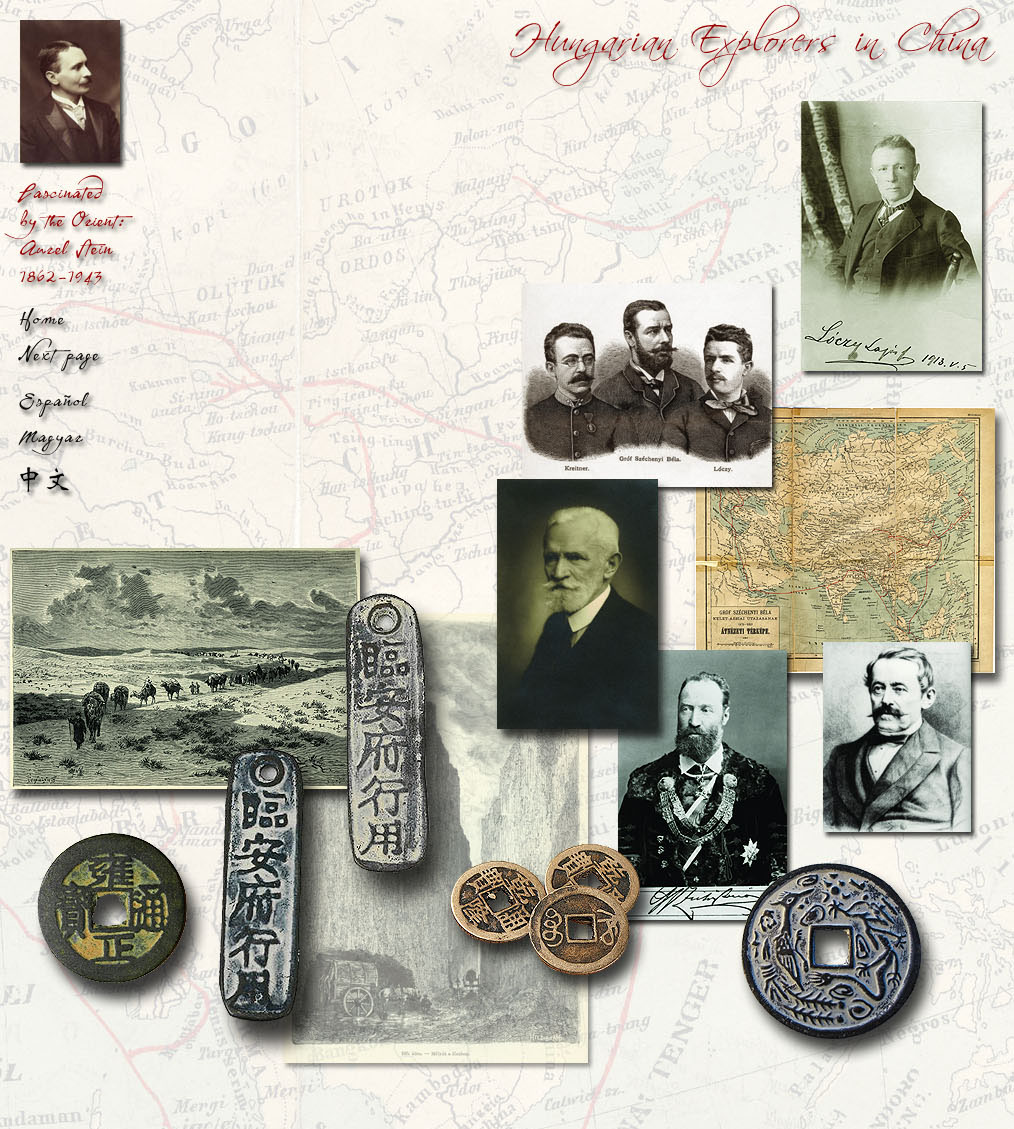 In
the second half of the 19th century, interest in Hungarian history and
the history of the Hungarian notion of China converged at several
points. History, linguistics, ethnography and art history all
encompassed the Hungarian myth of Oriental descent. The first scientific
expedition to China (1877-1880) was led by Count Béla Széchenyi. It
aimed to find ancestors of the Hungarians that had remained in Asia. The
expedition brought positive results not in this regard, but in the
fields of natural sciences, geography and geology. Due to the excellent
scientific background of its members as well as to modern surveying
instruments, the expedition made important scientific observations and
collected a large amount of data, thus greatly contributing to the
knowledge on China.
In
the second half of the 19th century, interest in Hungarian history and
the history of the Hungarian notion of China converged at several
points. History, linguistics, ethnography and art history all
encompassed the Hungarian myth of Oriental descent. The first scientific
expedition to China (1877-1880) was led by Count Béla Széchenyi. It
aimed to find ancestors of the Hungarians that had remained in Asia. The
expedition brought positive results not in this regard, but in the
fields of natural sciences, geography and geology. Due to the excellent
scientific background of its members as well as to modern surveying
instruments, the expedition made important scientific observations and
collected a large amount of data, thus greatly contributing to the
knowledge on China.
 Count Jenő Zichy launched three self-funded Asian
expeditions aiming at unfolding the legends of the family’s origins.
The first one was in 1895 to the Caucasus, and the second in 1896 to Turkestan. In the third expeditoin (1897-1898) Zichy arrived at Beijing
via Urga and the Gobi Desert. The participants of the expedition spent
three weeks in Shanghai, and then traveled on to Hong Kong before
returning home via Singapore, Colombo, Aden, Alexandria and Brindisi.
Count Zichy paid special attention to the archaeological material, from
where he supposed to locate the original homeland of the Hungarians. The
major objective of his expeditions was to collect evidentiary
Count Jenő Zichy launched three self-funded Asian
expeditions aiming at unfolding the legends of the family’s origins.
The first one was in 1895 to the Caucasus, and the second in 1896 to Turkestan. In the third expeditoin (1897-1898) Zichy arrived at Beijing
via Urga and the Gobi Desert. The participants of the expedition spent
three weeks in Shanghai, and then traveled on to Hong Kong before
returning home via Singapore, Colombo, Aden, Alexandria and Brindisi.
Count Zichy paid special attention to the archaeological material, from
where he supposed to locate the original homeland of the Hungarians. The
major objective of his expeditions was to collect evidentiary
![]() material
and to examine documents from the age of Hungary’s first rulers, the
House of Árpád (897-1301) that were taken from Hungary by Batu Khan in
1241.
material
and to examine documents from the age of Hungary’s first rulers, the
House of Árpád (897-1301) that were taken from Hungary by Batu Khan in
1241.
